42 label statement in sas
LABEL Statement :: SAS/ETS(R) 13.1 User's Guide The LABEL statement assigns SAS variable labels to variables in the output data sets. You can give labels for any number of variables in a single LABEL statement. The default labels for variables depend on the file type. Extra-long labels ( > 256 bytes ) reside in the OUTCONT data set as the DESCRIPT variable. Data Set Options : LABEL= - SAS OnlineDoc, V8 Details. You can use the LABEL= option on both input and output data sets. When you use LABEL= on input data sets, it assigns a label for the file for the duration of that DATA or PROC step. When it is specified for an output data set, the label becomes a permanent part of that file and can be printed using the CONTENTS or DATASETS procedure ...
Statements : LABEL - SAS Using a LABEL statement in a DATA step permanently associates labels with variables by affecting the descriptor information of the SAS data set that contains the variables. You can associate any number of variables with labels in a single LABEL statement. You can use a LABEL statement in a PROC step, but the rules are different.
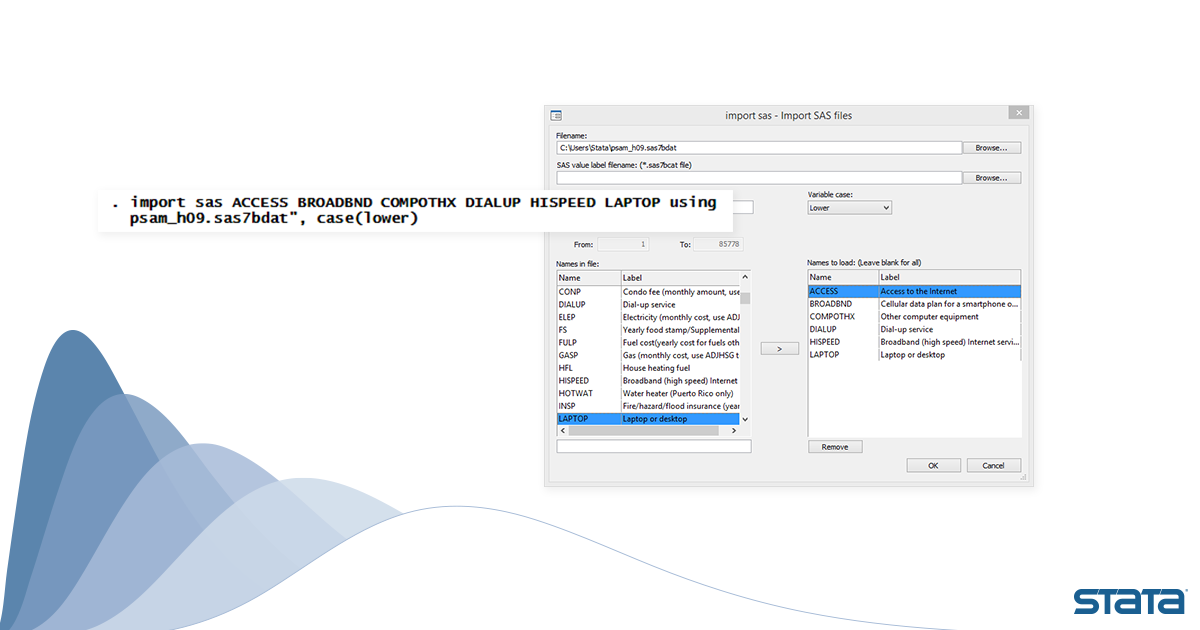
Label statement in sas
How to Label Variables in SAS - SAS Example Code In SAS, you can create a variable label with the LABEL statement. You can use this statement to assign one or more labels using 3 methods, namely a SAS DATA Step, the PROC SQL procedure, and the PROC DATASETS procedure. The exact syntax of the LABEL statement depends on the method of choice. SAS : Label Statement & Rename Statement - TechnicalJockey The Rename statement is used to change the name of a variable . The syntax of Rename statement is: Rename variable_name = new_name; variable_name - The name of a variable. new_name - The changed name of a variable. We create a temporary dataset "test_scores" and rename ID variable as student_id . 6.7 - Descriptive Labels - STAT ONLINE The LABEL statement can be placed either in a DATA step or directly in the PRINT procedure. When you place the LABEL statement in a DATA step, the label gets permanently affixed to the variable and therefore is available for all subsequent procedures. ... That is, instead of printing the variable no_vis, the LABEL statement tells SAS to print a ...
Label statement in sas. LABEL Statement :: SAS(R) 9.3 Statements: Reference Using a LABEL statement in a DATA step permanently associates labels with variables by affecting the descriptor information of the SAS data set that contains the variables. You can associate any number of variables with labels in a single LABEL statement. ... Automating SAS variable labels creation - SAS Users The most direct way of creating column labels is by explicitly assigning them to the data variables. You can do it during the data table creation in a DATA step using either LABEL statement or ATTRIB statement. Alternatively, you can do it after your data table is already created by using PROC DATASETS' MODIFY statement with the LABEL= option. Labeling | SAS Learning Modules First, you must create the label formats with proc format using a value statement. Next, you attach the label format to the variable with a format statement. This format statement can be used in either proc or data steps. An example of the proc format step for creating the value formats, forgnf and $makef follows. PROC DATASETS: LABEL Statement - SAS Support LABEL Statement. Assigns, changes, and removes variable labels for the SAS data set specified in the MODIFY statement. specifies a text string of up to 256 characters. If the label text contains single quotation marks, use double quotation marks around the label, or use two single quotation marks in the label text and surround the string with ...
SAS Help Center SAS® 9.4 DATA Step Statements: Reference documentation.sas.com. SAS® Help Center. Customer Support SAS Documentation. SAS® 9.4 and SAS® Viya® 3.5 Programming Documentation ... LABEL Statement. Label: Statement. LEAVE Statement. LENGTH Statement. LIBNAME Statement. LIBNAME Statement: CVP Engine. LABEL Statement - SAS Using a LABEL statement in a DATA step permanently associates labels with variables by affecting the descriptor information of the SAS data set that contains the variables. You can associate any number of variables with labels in a single LABEL statement. Comparisons HBar with Data Labels - Graphically Speaking - SAS Blogs CATEGORYORDER=respdesc is used to get a graph with descending response values. Here is the SGPLOT program. title 'Actual Values by Name with Data Labels'; proc sgplot data=bars noborder noautolegend; hbar name / response=actual nostatlabel dataskin=pressed displaybaseline=auto. datalabel=name datalabelattrs= (weight=bold) datalabelfitpolicy ... SAS Help Center: LABEL Statement SAS® 9.4 DATA Step Statements: Reference documentation.sas.com. SAS® Help Center. Customer Support SAS Documentation. SAS® 9.4 and SAS® Viya® 3.5 Programming Documentation ... Both the ATTRIB and LABEL statements can associate labels with variables and change a label that is associated with a variable. Label statements can be used in a ...
SAS Help Center: LABEL Statement Using a LABEL statement in a DATA step permanently associates labels with variables by affecting the descriptor information of the SAS data set that contains the variables. You can associate any number of variables with labels in a single LABEL statement. Comparisons SAS Help Center Base SAS Procedures. DATA Step Programming. DATA Step Programming for CAS. Data Set Options. Formats and Informats. Functions and CALL Routines. DATA Step Statements. Syntax Conventions for the SAS Language. Whatʼs New. LABEL Statement - SAS The LABEL statement specifies a label of up to 255 characters for parameters and other variables used in the model program. Labels are used to identify parts of the printout of FIT and SOLVE tasks. The labels will be displayed in the output if the LINESIZE= option is large enough. Chapter Contents Previous Next Top Statements: LABEL Statement - 9.2 - SAS Using a LABEL statement in a DATA step permanently associates labels with variables by affecting the descriptor information of the SAS data set that contains the variables. You can associate any number of variables with labels in a single LABEL statement. You can use a LABEL statement in a PROC step, but the rules are different.
SAS Remove Labels from Dataset with PROC DATASETS With the help of the MODIFY statement and ATTRIB option, you can remove the labels from your SAS dataset. Below is a simple example showing how you can remove labels from a SAS dataset. proc datasets lib=work; modify example_dataset; attrib _all_ label=''; run;
Solved: proc print display label - SAS Support Communities Posted 04-03-2017 08:39 AM (7715 views) | In reply to scb. Hi: Please read the PROC PRINT documentation, when you have a LABEL statement in your code, you need to tell PROC PRINT to USE the LABEL with the LABEL option in your PROC PRINT statement: proc print data=mydata label; or. proc print data=mydata split='_';
40 Most Common SAS Statements, Functions and Procedures Function: set conditional statement to execute different functions. 9. Keep, drop statement. Function: to keep only the variables needed in the data set. 10. Merge statement. Function: to merge multiple data set into one. III. SAS Statements.
'label' Statement - Boston University When a label statement is placed in a data step, the label stays with the variable for all subsequent procedures, unless relabeled. When placed in a procedure the label only stays attached to the variable for that procedure. Use double quotes if there is to be a single quote in the label. For example, label mombp="mother's systolic bld pressure";
PDF Techniques for Labeling SAS® Variables The LABEL statement can be used in a DATA step or a PROC step. A simple macro can minimize the typing (or copying, pasting and editing) required to label this series of variables. Save the macro in an autocall library for easy usage in any program. The macro needs to know four things, so it requires values for four parameters:
Statements : Labels, Statement - SAS The LABEL statement assigns a descriptive label to a variable. A statement label identifies a statement or group of statements that are referred to in the same DATA step by another statement, such as a GO TO statement. Examples In this example, if Stock=0, the GO TO statement causes SAS to jump to the statement that is labeled reorder.
Statements : ATTRIB - SAS OnlineDoc, V8 Here are examples of ATTRIB statements that contain. single variable and single attribute: attrib cost length=4; single variable with multiple attributes: attrib saleday informat=mmddyy. format=worddate.; multiple variables with the same multiple attributes: attrib x y length=$4 label='TEST VARIABLE';
Macro Statements: %label Statement - SAS An alternative to using the %GOTO statement and statement label is to use a %IF-%THEN statement with a %DO group. Example Example 1: Controlling Program Flow In the macro INFO, the %GOTO statement causes execution to jump to the label QUICK when the macro is invoked with the value of short for the parameter TYPE.
Rename Statement: Variable vs Label? - SAS Support Communities Why original name come up under 'Label' when using Proc Contents (i.e., variable name becomes uncon ... the label should change. However, when you explicitly set the label for the variable (using a label statement) it is unchanged by a rename. Richard. 0 ... WHERE vs. IF, SQL vs. DATA step and more, presented by SAS' Mark Jordan (aka the SAS ...
Solved: Label Statement not working - SAS Support Communities I am using the Proc statement below to import an excel sheet into SAS. Then I used the data set to change the labels. I can see the labels are changed in proc contents but the labels will not show in the output or with the print proc. Is there something I am missing or could I have done the label statement in the proc import statement. Thank you!
6.7 - Descriptive Labels - STAT ONLINE The LABEL statement can be placed either in a DATA step or directly in the PRINT procedure. When you place the LABEL statement in a DATA step, the label gets permanently affixed to the variable and therefore is available for all subsequent procedures. ... That is, instead of printing the variable no_vis, the LABEL statement tells SAS to print a ...
SAS : Label Statement & Rename Statement - TechnicalJockey The Rename statement is used to change the name of a variable . The syntax of Rename statement is: Rename variable_name = new_name; variable_name - The name of a variable. new_name - The changed name of a variable. We create a temporary dataset "test_scores" and rename ID variable as student_id .
How to Label Variables in SAS - SAS Example Code In SAS, you can create a variable label with the LABEL statement. You can use this statement to assign one or more labels using 3 methods, namely a SAS DATA Step, the PROC SQL procedure, and the PROC DATASETS procedure. The exact syntax of the LABEL statement depends on the method of choice.
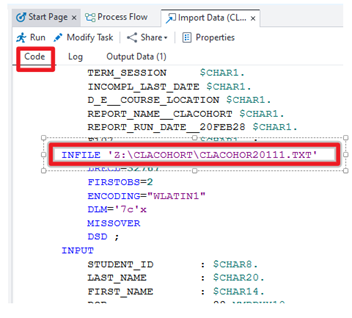

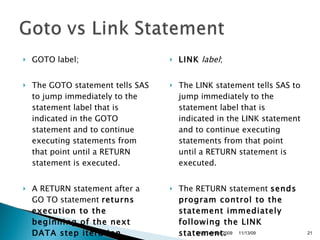



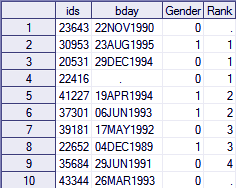


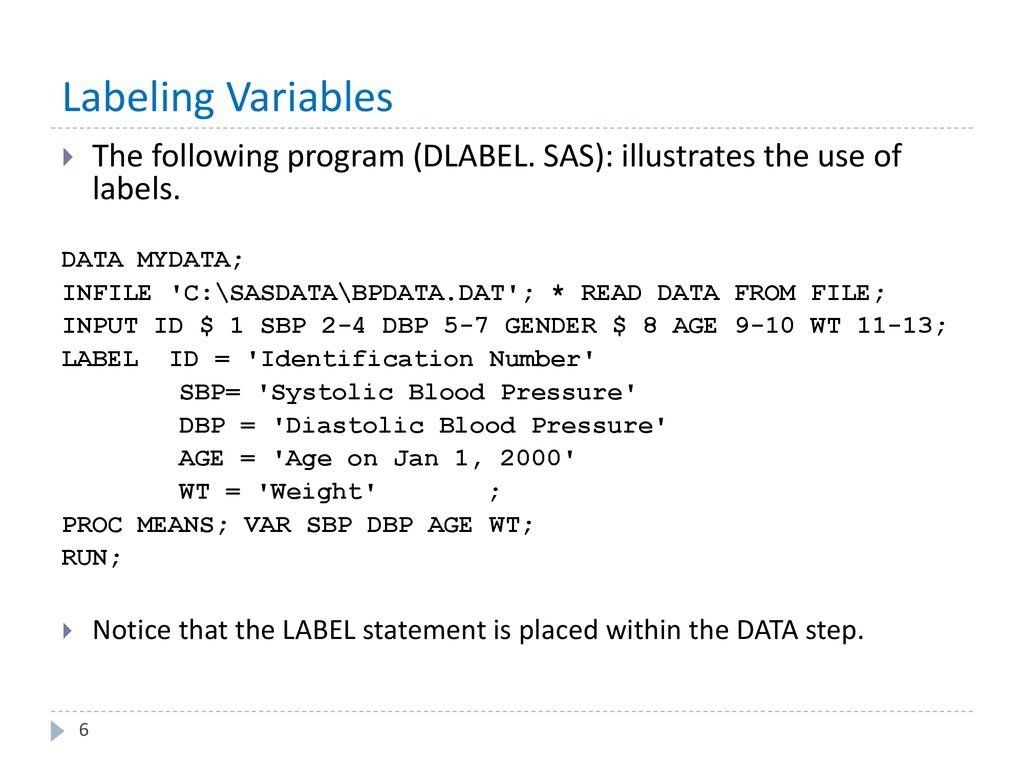

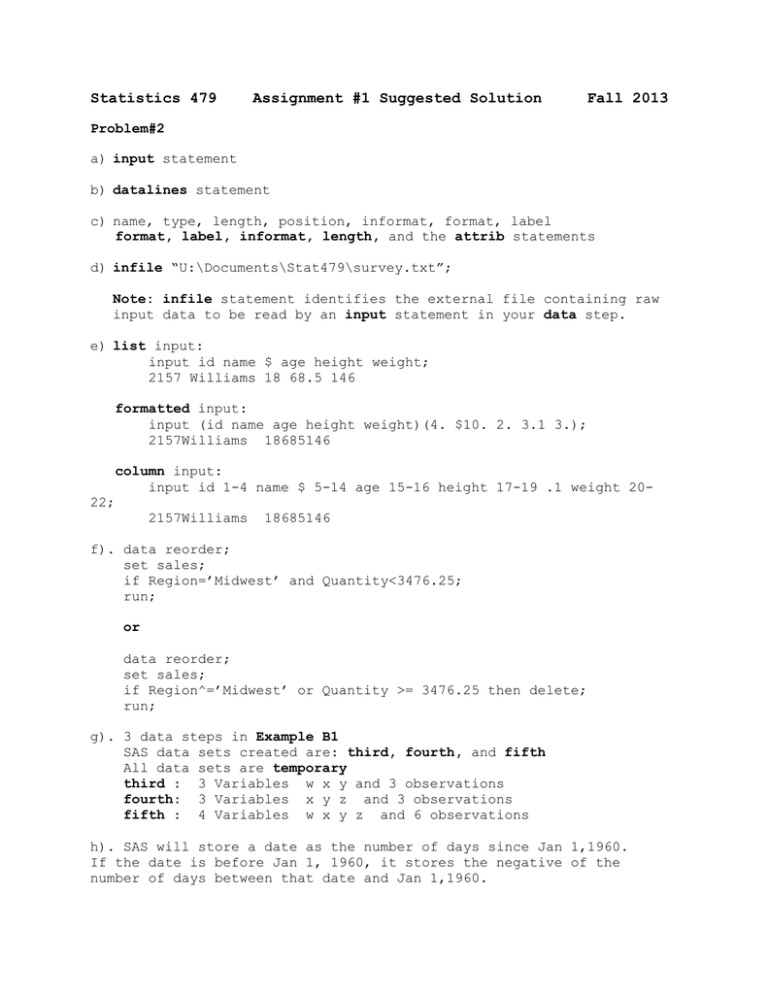
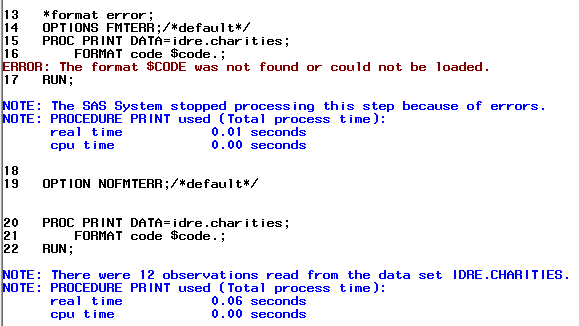

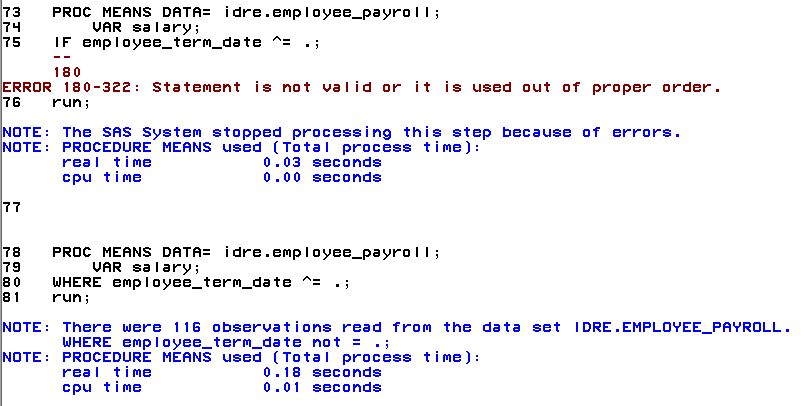
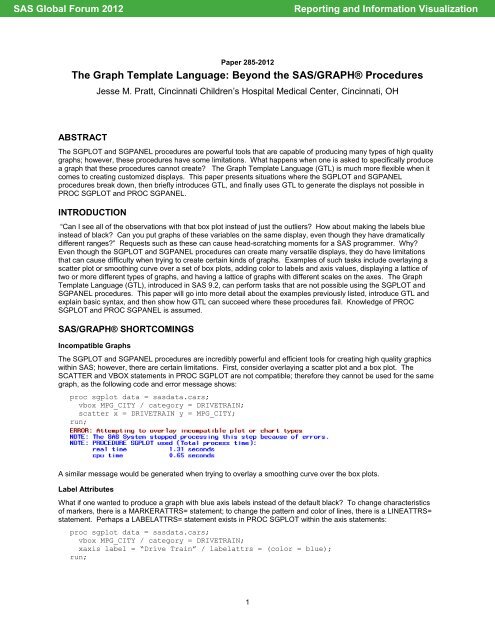
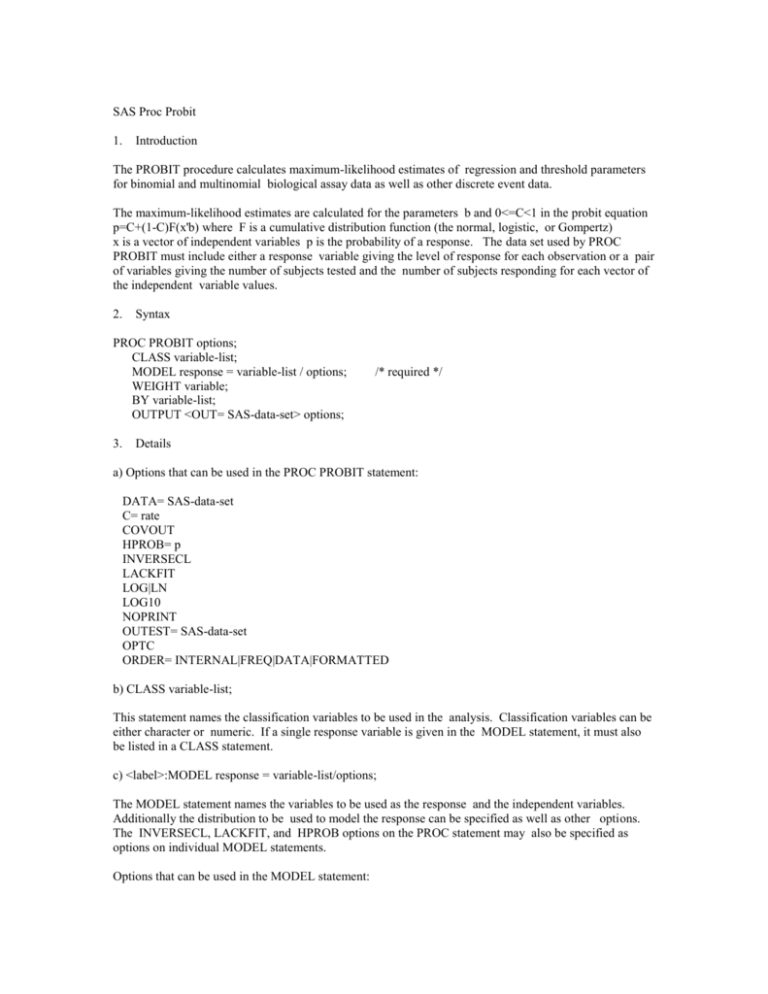
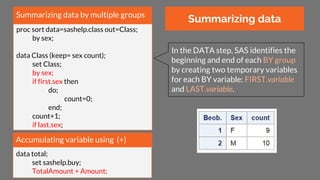
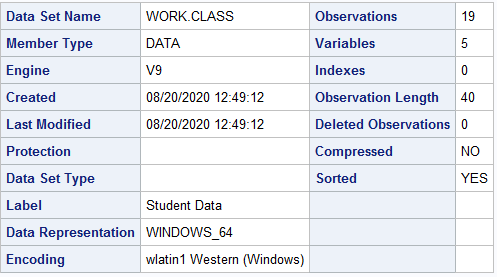
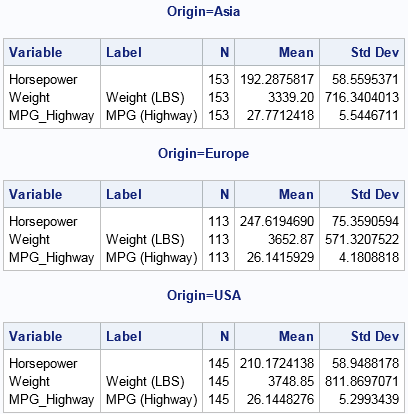
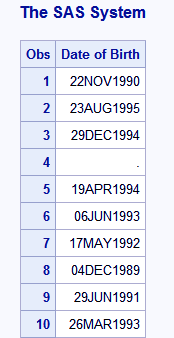
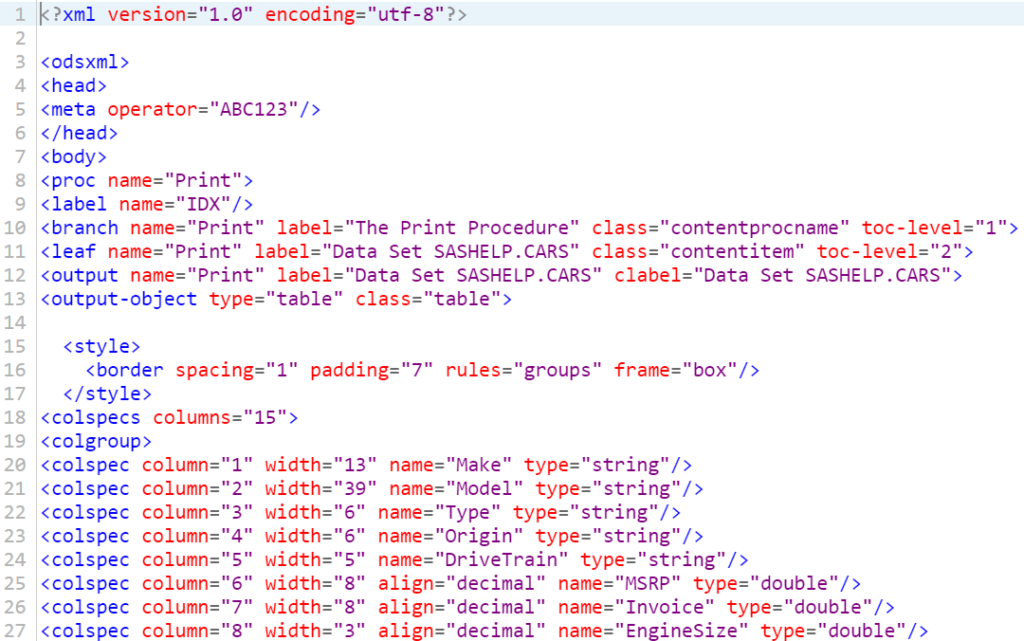

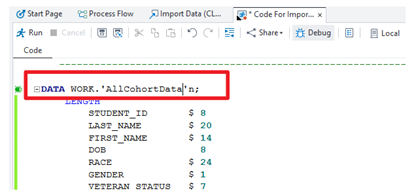





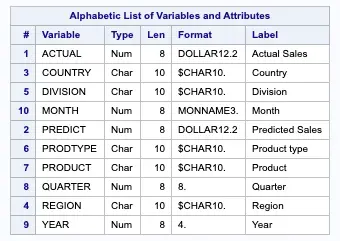

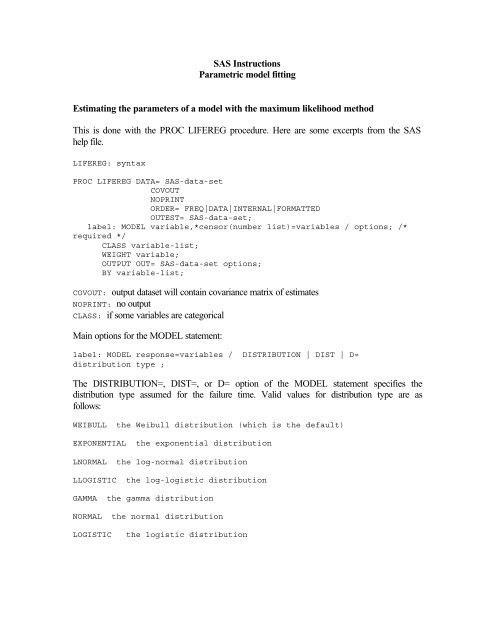
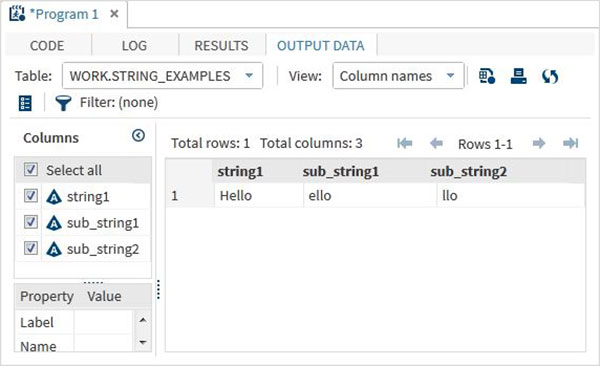
Post a Comment for "42 label statement in sas"